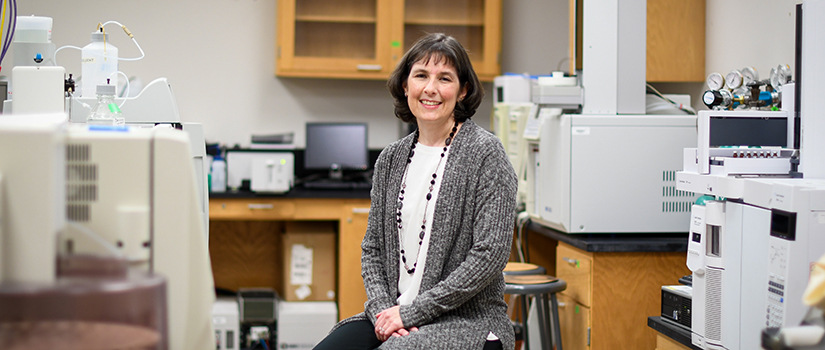CEC civil and environmental team studies engineered nanomaterials' impact on municipal landfills
It’s no question that new material technologies have led to significant improvements in consumer products. These engineered materials inhibit odors in socks, lend antimicrobial properties to medical bandages and extend the shelf life of some food and cosmetic products, including sunscreen. But what happens when it’s time to dispose of them? Nicole Berge, an associate professor of civil and environmental engineering in the College of Engineering and Computing, is looking for answers to that question through a grant from the National Science Foundation.
Engineered nanomaterials are materials with particle sizes between 1 to 100 nanometers in at least one dimension. Their very small size allows them to be mixed into other materials to form composite materials with improved properties. In addition, their high surface area to volume ratios make them excellent catalysts with faster reaction time. These unique properties are what allow them to make consumer products better, but are they suitable for placement in landfills?
“As consumer products containing engineered nanomaterials reach the end of their useful life, it’s likely they will end up in municipal solid waste landfills," Berge said. "We are trying to understand if that is the most appropriate depository for these products.”
The $329,937 NSF grant allowing for these questions to be answered is expected to conclude in the spring of 2021. Berge is collaborating with Joseph Flora and Charles Pierce, also associate professors of civil and environmental engineering.
Much of Berge’s body of research focuses on understanding different treatment options and approaches for municipal solid waste. An important part of that is understanding what happens in a landfill and the impact of landfilling new materials.
The research team believes that, under certain conditions, the engineered nanomaterials will be released from products into the leachate, which is liquid that has come into contact with solid waste, and move throughout the landfill. Landfills, as well as leachate storage/collection ponds, are lined with plastic geomembranes that function as barriers that protect the surrounding environment from any potential contamination. This work focuses on understanding whether engineered nanomaterials alter the composition of the plastic geomembranes. These geomembranes contain antioxidants that help protect them from oxidation and helps them remain effective over long periods of time. It is hypothesized that engineered nanomaterials may influence antioxidant release or depletion from the geomembranes.
“This liner is made from high density polyethylene," Pierce said. "The concern with anything made of plastic is that polymers can degrade over time, and the properties change. We are testing those properties to ensure the materials aren’t interacting in way that accelerates degradation of the liner.”
Researchers aren’t certain at this stage whether the engineered nanomaterials will impact the composition of the geomembrane. The team is conducting experiments in which geomembrane samples are incubated in solutions mimicking conditions present if engineered nanomaterials were to come into contact with them, and are measuring how the antioxidant concentrations in the geomembrane change over time.
Berge said, “Ultimately we want to know whether the composition of the high density polyethylene geomembrane changes if these engineered nanomaterials come into contact with it. If they do impact the geomembrane, it’s possible that the liner will ultimately fail, which could cause all types of environmental ramifications, such as contaminated groundwater or drinking water.”
If disposal of products made from engineered materials is in fact detrimental to the landfill, Berge explains that more research will be required to devise suitable alternatives. She said, “Our next step would be to think about how we operate the landfills or whether we change the way the liners are made.”
Berge is an associate professor of civil and environmental engineering. Her research focuses on understanding how physical, chemical and biological processes can be manipulated to promote sustainable waste treatment techniques.
